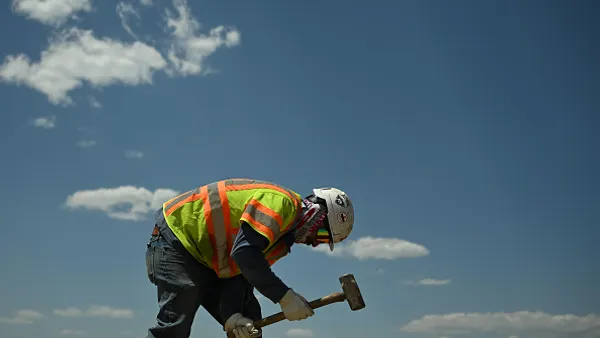When it was clear that the novel coronavirus was going to severely disrupt the business operations of many U.S. companies across a wide range of industries, lawmakers decided to provide economic relief via the Coronavirus Aid, Relief, and Economic Security (CARES) Act, which, among other things, created the Paycheck Protection Program (PPP).
The PPP initiative, which has seen two rounds of funding totaling $659 billion and is being administered by the Small Business Administration (SBA) through traditional lenders, was intended to provide short-term financing to small businesses that would otherwise have to lay off employees as a result of stay-at-home orders and mandatory shutdowns.
Arguably PPP's biggest benefit is that the loans are eligible for forgiveness as long as the proceeds are spent on payroll and other certain expenses within eight weeks of disbursement and the employer retains the same number of employees it had prior to receiving the loan.
Forgiveness will be reduced if a firm's full-time headcount declines or if salaries decrease. The loan has a maturity of two years and an interest rate of 1%.
While this sounds like a stop-gap solution for many businesses, the program's eligibility and spending requirements have confused some employers to the point that they are considering returning the proceeds and laying off employees rather than risk the steep penalties for running afoul of the PPP’s rules.
In fact, the Associated General Contractors of America reported last week that 18% of the contractors it surveyed are thinking about returning their PPP loans. In an earlier report, the AGC said that 75% of its members have either applied for or intend to apply to the program.
Why are contractors so uncertain?
During two AGC-hosted webinars last week, attorneys from Crowell & Moring LLP in the firm’s Washington, D.C., and Los Angeles offices explained some of the major challenges business are having understanding and taking advantage of the PPP loans, as well as contractors’ best steps for applying for a PPP loan.
Attorney Amy O’Sullivan called the PPP application somewhat of a “rollercoaster” process, leaving the legal community trying to translate the changes, lack of guidance, “flip flops” regarding eligibility and other elements of the program.
For example, attorney Olivia Lynch said when the program was first rolled out, there was confusion around whether U.S.-based companies had to take foreign-owned affiliates and their employees into consideration when calculating eligibility according to size. Subsequent guidance from the government, she said, advised applicants that they must count all employees, foreign and domestic.
One of the drivers behind the Department of the Treasury’s decision to take another look at the program and update its parameters is the bad press large, public companies have been getting after applying for and receiving PPP funds, O’Sullivan said.
Information about which companies have been approved for PPP loans have been gleaned from the documents that publicly traded firms must submit regularly to the Securities and Exchange Commission. The SBA has not yet responded to Construction Dive’s Freedom of Information Act request for a list of all construction industry entities, pubic and private, that have been approved for a PPP loan.
And lenders have added to the confusion, O’Sullivan said. Businesses apply through traditional banks, which are typically their sole source of advice about eligibility. It might surprise some loan recipients to discover that just because they’ve received a loan doesn’t mean they were eligible, she said.
The Treasury has addressed some vagaries in the program rules and is expected to continue to issue updated guidance, which in itself, presents another problem for those firms trying to determine where they stand as far as eligibility and forgiveness — figuring out under which iteration of the rules they submitted their applications and which version of the regulations apply to the administration of their loans.
Severe penalties for violations
Perhaps the most important reason that contractors should be careful about keeping track of the rule changes and updates is that penalties for PPP violations can be severe. The Treasury and the SBA have announced their intention to audit companies in receipt of $2 million or more upon their applications for forgiveness, and the PPP is subject to Congressional oversight as well.
The big stick in federal prosecutions, though, is the False Claims Act, under which the Department of Justice can prosecute those who make false claims for payment to the government or knowingly avoid their obligations to pay what they owe to the government, according to attorney Mana Lombardo of Crowell & Moring.
“In theory,” she said, “failure to perform due diligence can be grounds for liability.”
Potential penalties include having to pay back three times the loan amount, other monetary fines, reputational harm and, for federal contractors, suspension or debarment.
However, Lombardo said, there are things contractors can do to mitigate their risk if they move forward with a PPP loan, including:
1. Making sure that your company meets the up-to-date size and affiliation limitations set forth by the PPP rules and their NAICS (North American Industry Classification System) code designation. It’s important to remember that lenders often are the only source of advice for borrowers and are not liable for mistakes — only the applicants are.
2. Ensuring that all statements, certifications and application attachments are accurate. Make sure that whoever is verifying the accuracy is doing so according to the most recent government guidance.
3. Documenting how your firm is eligible for the loan by maintaining records of lost revenue, lack of liquidity and other business conditions that make the loan necessary to support ongoing operations as required by the PPP.
Attorney David Robbins said that companies should incorporate those analyses into a day-by-day calendar format so that it will be clear down the line what guidance was in place at the time of the decision making.
Also, when entering into a PPP loan agreement, the borrower is certifying that it did not have access to other forms of liquidity. During the question-and-answer session at the end of the AGC webinar, Lombardo said that it is likely there will be a better definition coming from the Treasury and the SBA as to what “access to liquidity” means.
Attorney David Robbins said he does not believe that the federal government means to imply that a company has to deplete its other sources of cash — i.e. lines of credit and credit cards — before applying for a PPP loan.
“There has got to be a recognition that even tapping an existing line of credit with a far higher interest rate associated rather than this can, in and of itself, have its own economic impact,” Robbins said. “So, I can’t see how that is part of a government requirement.”
4. Documenting and tracking how PPP money is used. The Treasury said the PPP loan recipients must spend 75% of the proceeds on payroll expenses and then on items like rent and utilities in order to qualify for forgiveness. Therefore, it is important that contractors keep detailed records of how they spend the money, Lombardo said.
To that end, she said, contractors should consider keeping the PPP funds in a separate account and creating new general ledger accounts to better track activity associated with the loan proceeds.
At this point, companies that have taken PPP loans but now feel that they did not qualify are able to return the money with no penalties if they do so by May 14.
The federal guidelines have changed, so contractors would be well served to consult their accountants and attorneys about their involvement in the PPP, the legal experts said.
“Seek the advice of qualified legal counsel for any questions you have about eligibility,” Robbins said. "Not only is it our job to follow this stuff, but we shield by legal privilege the communication, so you can have candid conversations about your risk and your exposure."





















